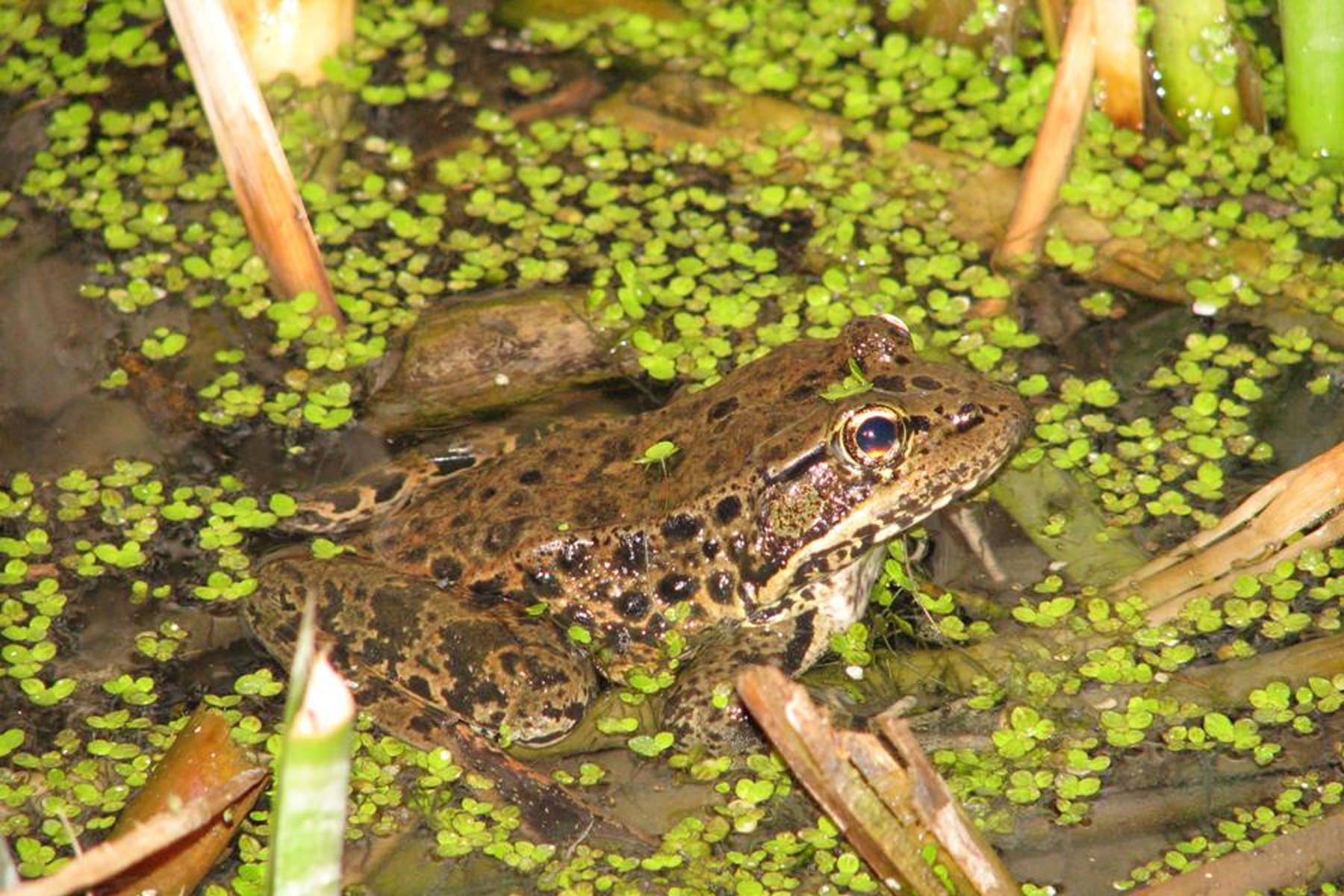Aberdeen Proving Ground, Md. -- Ecosystem management at the California Army National Guard's Camp San Luis Obispo has staved off land erosion and given endangered species a fighting chance.
Camp San Luis Obispo is home to three federally endangered species, seven federal species of concern and thirteen California Fish and Wildlife Department species of concern.
One of the federally endangered species, the California Red-legged Frog, has disappeared from 70 percent of its historic habitat due to the introduction of exotic predators like bullfrogs and habitat destruction. Camp San Luis Obispo is trying to protect the Red-legged frogs on base by maintaining the environmental health and quality of their lands, which includes the habitat of the frog. Their land preservation efforts are so successful that they were excluded from government critical habitat designation procedures for the endangered frog.
"The Army is held to a high standard when it comes to protecting endangered species," said Maj. Nicole Balliet, Garrison Commander at Camp San Luis Obispo. "We've put together an integrated natural resources plan that is so protective of the California red-legged frog's habitat that the U.S. Fish and Wildlife Service doesn't require us to set aside land just for its survival."
Land erosion is also a major problem when it comes to the survival of the Red-legged frog and other endangered and sensitive species. To address land erosion, Camp San Luis Obispo implements a water conservation and sediment control program. Controlling sedimentation and conserving water helps restore the natural habitat of the species who live at the camp because it stabilizes and preserves the land.
Camp San Luis Obispo staff stabilized terrain through their Dairy Creek Erosion Control Project by increasing native vegetation and tree plantings to combat erosion. Terrain stabilization wards off erosion in the habitats of many of the camp's sensitive species. A specific beneficiary of the Dairy Creek Erosion Control Project is the federally-listed endangered steelhead trout. Erosion control mitigates sedimentation in the camp's waterways, which can interrupt the trout's lifecycle.
Erosion isn't the only danger to endangered species at Camp San Luis Obispo - other species are, too. The sharp and spiny purple star and wooly distaff thistles can threaten the federally endangered Chorro Creek bog thistle by encroaching upon its habitat. These thistles can also cause injury to other animals and troops. Manual and chemical removal by certified personnel has reduced the abundance of these offensive plants and enhanced the quality of life for Soldiers and species of concern at the camp.
In an indirect, but important, effort to guard the sensitive species at the installation, Camp San Luis Obispo hosts tours for community leaders and adult organizations.
These tours are offered to educate the community about the installation's environmental efforts to protect endangered species and prevent habitat destruction through erosion. These tours help to alleviate misconceptions about training impacts on installation lands and educate participants about the importance of environmental stewardship and endangered species protection.
For their efforts to defend endangered species and maintain natural ecosystems, Camp San Luis Obispo received the Army's highest honor in environmental stewardship - the Secretary of the Army Environmental Award. The award was conferred on the installation at a ceremony on March 27th.
<i>This information is provided by USAEC. USAEC is the Army's point organization for supporting the implementation of environmental programs that facilitate sustainable Army training and operations while protecting the environment. We provide environmental program management and technical support products and services in support of Army training operations, acquisition and sound stewardship. </i>
<center>"Sustaining the Environment for a Secure Future"</center>


Social Sharing